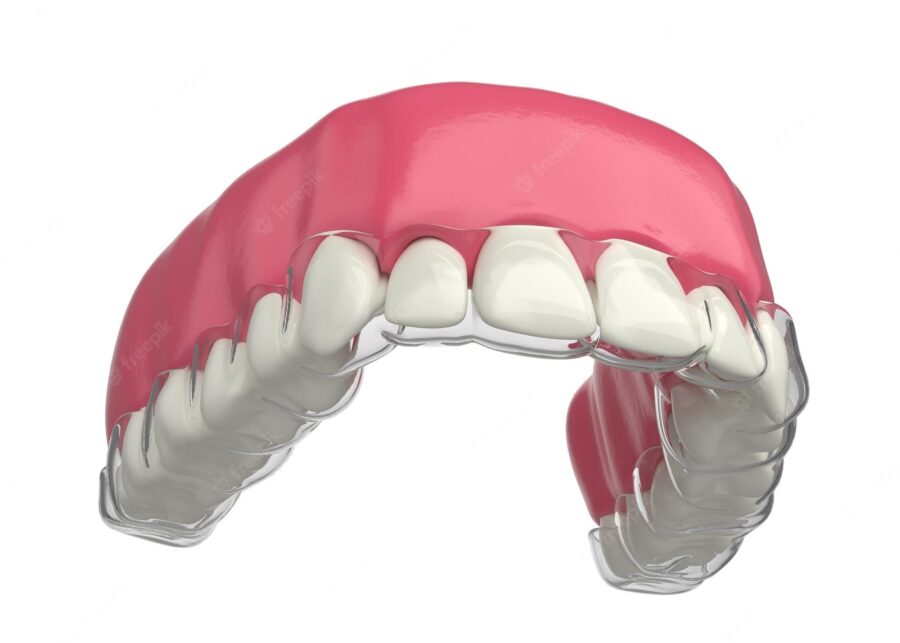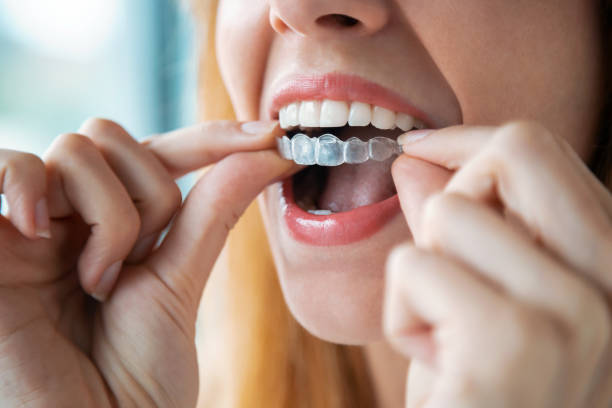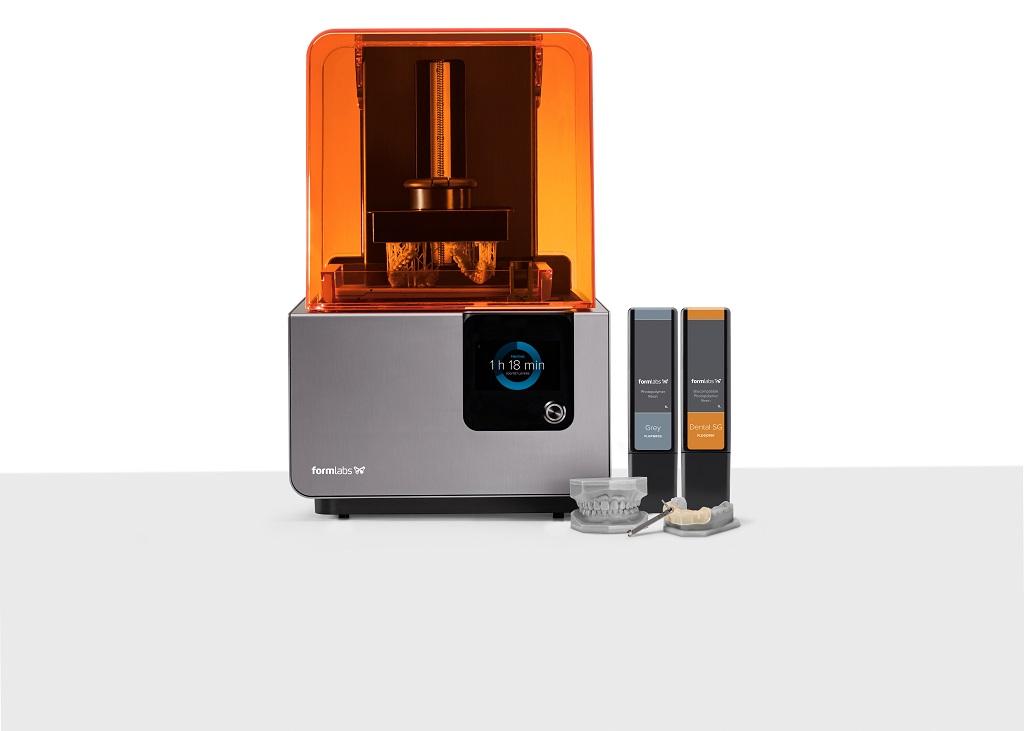Technology developments are continuously reshaping and redefining the way orthodontic treatments are provided in the ever-evolving field of dentistry. The use of 3D printing technology to produce orthodontic aligners is one such breakthrough over braces that has rocked the dentistry sector. With the use of 3D printing, orthodontists can now precisely tailor aligners to each patient’s particular tooth structure. Additionally, this state-of-the-art technology enables higher patient pleasure and engagement. The use of 3D printing technology in dentistry is anticipated to extend even further as demand for orthodontic aligners rises. As 3D printing technology transforms dentistry, be ready to see a change in how orthodontic treatment is provided.
Traditional Orthodontic Treatment vs Aligners
Two alternative methods of straightening teeth and improving bite alignment are traditional orthodontic treatments and orthodontic aligners. Each approach has benefits and drawbacks.
| Traditional Orthodontic Treatments | Orthodontic Aligners | |
|---|---|---|
| Treatment Duration | Depending on how severe the situation is, brace therapy may last anywhere from 18 months to 3 years. | While the length of treatment with aligners might vary, it often takes about as long as treatment with braces. The length of time depends on how complicated the orthodontic problems are. |
| Appearance | When you smile, you can see the metal brackets and wires that make up braces. They could make your grin seem less attractive and more obvious. | Clear, removable trays that go over your teeth and are less obvious than braces are called aligners. They are often chosen due to their attractive appearance. |
| Diet Restrictions | Dietary restrictions apply to those wearing braces since certain foods may harm them or become trapped in them. Hard meals, popcorn, and sticky sweets should all generally be avoided. | There are no dietary restrictions since aligners are taken out during eating. All of your favorite meals are OK, but you should clean your teeth beforehand before re-putting the aligners in. |
| Comfort | When modifications are performed, braces may initially cause pain, irritability, and soreness. On occasion, the metal parts may chafe against the lips and cheeks. | Due to their lack of sharp parts and smooth edges, aligners are often more comfortable. When they are initially used or modified, they could, however, cause some pain. |
| Cost | Although prices might vary based on the intricacy of the case and the kind of braces used, braces can be less costly than certain aligner procedures. | Aligners could cost more, but prices can also vary greatly based on the manufacturer and the duration of the procedure. |
Benefits of Orthodontic Aligners
- Aligners are a discrete choice for teeth straightening since they are almost unnoticeable.
- Aligners are removable, which encourages improved dental hygiene. They may be taken out for eating, drinking, brushing, and flossing.
- Compared to conventional braces, smooth plastic aligners are more pleasant and create fewer irritations.
- Since aligners are taken out when eating, there are no dietary limitations.
- Fewer orthodontic appointments are necessary since modifications are made in-office less often with aligners than with braces.
- Aligners often result in shorter treatment times than braces.
- The precision treatment planning made possible by computer modeling makes results more predictable.
- Aligners have less of an impact on speech than braces do.
Evolution of Orthodontic Aligners with 3D Printing
The area of orthodontics has undergone a revolution because to the development of 3D printing technology, which has sped up, improved, and reduced the cost of creating aligners. Additive manufacturing, sometimes referred to as 3D printing, is the process of building three-dimensional items layer by layer from digital models.
A digital scan or imprint of the patient’s teeth is utilized to build a virtual model for orthodontic aligners, which is then transformed into a 3D printable file.

Orthodontists may create aligners that precisely fit a patient’s dental anatomy by using 3D printing technology. The aligners are made by layering a biocompatible resin or plastic substance, curing it with UV radiation, and then removing the excess material.
This procedure enables the creation of very accurate aligners that are customised for each patient. Orthodontists have more control over the design and production of aligners because of 3D printing. They may quickly alter the aligner design to meet certain orthodontic issues and make corrections as necessary. The best possible treatment results and patient satisfaction are guaranteed at this degree of customisation.
How 3D Printing Technology is Revolutionising
The use of 3D printing technology in orthodontics has had a significant influence on the sector and changed how orthodontic treatments are designed and carried out. Making very precise and detailed replicas of the patient’s teeth and gums is one of the key benefits of 3D printing.
The whole course of treatment, from the first movement of the teeth to the precise alignment, may be planned using these models. The use of 3D printing technology in orthodontics has significantly revolutionized the field and the way that orthodontic procedures are planned and carried out.
One of the major advantages of 3D printing is its capacity to produce very accurate and detailed copies of the patient’s teeth and gums. Using these models, the whole course of treatment, from the initial tooth movement to the perfect alignment, may be planned.
Process to create Orthodontic Aligners with 3D Printing
Several stages that combine cutting-edge digital technology with the accuracy of 3D printing are required to create orthodontic aligners with this technique. Getting a digital scan or imprint of the patient’s teeth is the initial step. This may be accomplished either by taking conventional physical imprints and scanning them to create digital models or by employing an intraoral scanner, which records precise pictures of the teeth and gums.

After getting the patient’s digital dental model, it is processed using specialist software. With the use of this software, the orthodontist may design the necessary tooth motions and provide a virtual image of the ultimate alignment. With the aid of the software, the orthodontist may also create the 3D printing instructions and design the aligner trays.
After the digital model is finished, it is transformed into a file format suitable for 3D printing, such as STL (Standard Tessellation Language). Using the data from this file, the 3D printer builds the aligners layer by layer.
A biocompatible resin or plastic substance is laid down in tiny layers using a 3D printer, and these layers are then cured using UV radiation. For every aligner throughout the course of therapy, this procedure is repeated. The aligners are completely cleaned and checked for quality control after printing. At this point, any required modifications or changes may be performed to guarantee that the aligners fit precisely and comfortably. The final aligners and use and maintenance instructions may then be provided to the patient.
Innovations in 3D Printing Technology for Orthodontics
The accuracy, effectiveness, and customisability of orthodontic treatments have been greatly improved by developments and advancements in 3D printing technology. Aligners that are highly personalised and specifically adapted to each patient’s individual dental anatomy may be made via 3D printing. Digital scans and 3D printing help limit the margin of error, resulting in a more precise fit for orthodontic tools like aligners and braces.
Some 3D-printed dental tools, such as orthodontic brackets, are made to hasten the teeth-straightening procedure. Faster creation of 3D-printed orthodontic models and appliances results in fewer trips to the orthodontist’s office, which reduces chair time. 3D printing enables the development of sophisticated bracket designs, such as those that reduce friction, enhance comfort, and enhance therapeutic effectiveness.
Conclusion
A technological revolution is now taking place in dentistry, and 3D printing technology is at the forefront of this change. The use of 3D printing in the manufacturing process has revolutionized orthodontics, enabling previously unheard-of levels of personalization, accuracy, and effectiveness. Crowns and bridges needed for dental prostheses are made at the Royal Dental Clinics Lab, utilizing the most advanced technology available. For more than 35 years, they have been manufacturing dental crowns in accordance with studies from the International Institute of Dental Studies. They are known and well-regarded for their founder’s work in the field of implantology. They have a maxillofacial CBCt on-site with CAD and CAM.






